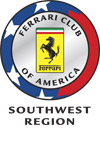
Oldtimer's Corner - Charlatans and Mountebanks, Final (?) Chapter
By: Ed Niles
Well, boys and girls, I thought that we had just about exhausted the subject of trickery in general, and fake cars in particular. But then I read a story about Lord Brocket, and that reminded me of a couple of others.I guess I will never suffer from writer's block. Writer's drivel, maybe.
If you are a reader of AutoWeek, you may have noticed two or three recent articles about Lord Charles Brocket, who pleaded guilty to fraud charges in England, involving the destruction of several rare and wonderful Ferraris. It turns out that Charles Brocket could be thought of as the Charles Manson of the sportscar world; something in the nature of a mass murderer of cars.
The story goes something like this: Charles Brocket was the proprietor of Brocket Hall, in England. The estate consisted of roughly 5,000 acres, 1,000 of which were walled. As one entered the estate through double gates, one drove (via a long gravel drive) past an eighteen hole golf course and a lake, until Brocket Hall itself came into view. If one were fortunate enough to be visiting Lord Brocket, one would find the entry doors swung open by a liveried butler.
Brocket Hall was an immense and wonderful estate by anyone's measure. But for Ferrari enthusiasts, it held a special charm: The Hall included a museum of sorts, in which approximately 50 beautiful sports-racing automobiles resided, mostly Ferraris. Perhaps you saw one of his Ferraris at Laguna Seca in l994.
 Lord Brocket?s Garage.
Lord Brocket?s Garage.
For many years, the Ferrari Owners' Club (U.K.) held meetings on the grounds, where all Ferrari enthusiasts were welcome. This event was certainly one of the highlights of the FOC year. Almost all of the Ferraris in Lord Brocket's collection were older models, some of them going back to the very earliest Ferraris. In fact, one of his cars was one that I briefly owned, a 1949 166 Berlinetta with body by Stabilimenti Farina, Serial No. 037S.
As other Lords of the Realm had discovered, running an estate of the size of Brocket Hall is not an easy task, financially or otherwise, and Brocket's title only goes back two or three generations. Lord Brocket was facing a five million Pound debt, and the lender was pressing hard for payment. As was the case with so many other collectors, the great collapse of l990 hit Charles Brocket hard. In 199l, with the market still plummeting, Lord Brocket reinsured his collection at pre-collapse prices, and then reported a number of cars stolen. Among them were a Ferrari 340 America, a Ferrari 250 Europa, a Ferrari 195 sport, a 1960 "Birdcage" Maserati, as well as other cars and a number of rare and interesting engines. He was quoted as saying that he believed that the stolen merchandize had been taken overseas for resale by an international syndicate of thieves. And by strange coincidence, Brocket claimed that he had purchase offers on at least two of the cars from "Japanese buyers".
Charles Brocket made claim against his two insurers, General Accident and Lloyds of London, for figures variously quoted at between 4.5 million and 7 million Pounds (that's 7 to 10 million Dollars!). When the insurers refused to pay, Lord Brocket sued.

At the time, Brocket was separated from his wife, and facing a divorce. In England, a divorce can only be granted after three years of separation. Apparently Lord Brocket's separation from his wife was not a happy one, and Lady Brocket had problems of her own. Some feel that it was Lady Brocket who blew the whistle on her estranged husband. But perhaps it was nothing more than the natural suspicion of insurance adjustors, who were asking themselves how could such unique cars simply disappear off the face of the ear
